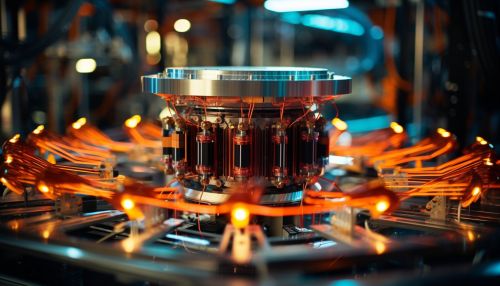Quantum Computing with Quantum Optomechanical Systems for Quantum Sensing
Introduction
Quantum computing is a rapidly evolving field that leverages the principles of quantum mechanics to perform computations. Quantum optomechanical systems, which combine the properties of quantum mechanics, optics, and mechanics, have emerged as a promising platform for quantum computing. These systems also hold potential for quantum sensing, a field that uses quantum phenomena to measure physical quantities with unprecedented precision. This article delves into the intricacies of quantum computing with quantum optomechanical systems and their application in quantum sensing.
Quantum Computing
Quantum computing is a type of computation that uses qubits instead of classical bits to store and process information. Unlike classical bits, which can be either 0 or 1, qubits can exist in a superposition of states, allowing them to represent both 0 and 1 simultaneously. This property, along with entanglement and quantum interference, enables quantum computers to solve certain problems much faster than classical computers.


Quantum Optomechanical Systems
Quantum optomechanical systems are devices that couple light (optics) with mechanical motion (mechanics) at the quantum level. These systems typically consist of an optical cavity, which traps light, and a mechanical oscillator, which moves in response to the radiation pressure exerted by the trapped light. The interaction between the light and the oscillator can be controlled and manipulated to perform quantum operations, making these systems suitable for quantum computing.
Quantum Sensing
Quantum sensing is a field that uses quantum phenomena to measure physical quantities, such as time, frequency, temperature, and gravitational fields, with high precision. Quantum sensors leverage the properties of quantum superposition and entanglement to achieve sensitivities beyond the reach of classical sensors. Quantum optomechanical systems, with their ability to control and manipulate quantum states of light and matter, are well-suited for quantum sensing applications.
Quantum Computing with Quantum Optomechanical Systems
Quantum optomechanical systems offer a unique platform for quantum computing. They allow for the manipulation of quantum states of light and matter, which can be used to perform quantum operations. The interaction between light and the mechanical oscillator in these systems can be controlled to create and manipulate qubits, the fundamental units of quantum information.
One of the key advantages of using quantum optomechanical systems for quantum computing is their scalability. These systems can be integrated on a chip, allowing for the creation of large-scale quantum processors. Moreover, they operate at room temperature, unlike many other quantum computing platforms that require extremely low temperatures.
Quantum Sensing with Quantum Optomechanical Systems
Quantum optomechanical systems also hold promise for quantum sensing. The precise control of quantum states in these systems can be used to measure physical quantities with high accuracy. For example, the motion of the mechanical oscillator can be used to measure forces and displacements at the quantum limit.
Quantum optomechanical sensors can operate in a wide range of environments and can be integrated on a chip, making them suitable for a variety of applications. They can be used to measure gravitational fields, magnetic fields, temperatures, and other physical quantities with unprecedented precision.
Conclusion
Quantum computing and quantum sensing with quantum optomechanical systems represent a promising frontier in the field of quantum technologies. These systems offer unique advantages, including scalability and operation at room temperature, making them suitable for a wide range of applications. As our understanding of these systems deepens, they are expected to play a crucial role in the advancement of quantum technologies.
